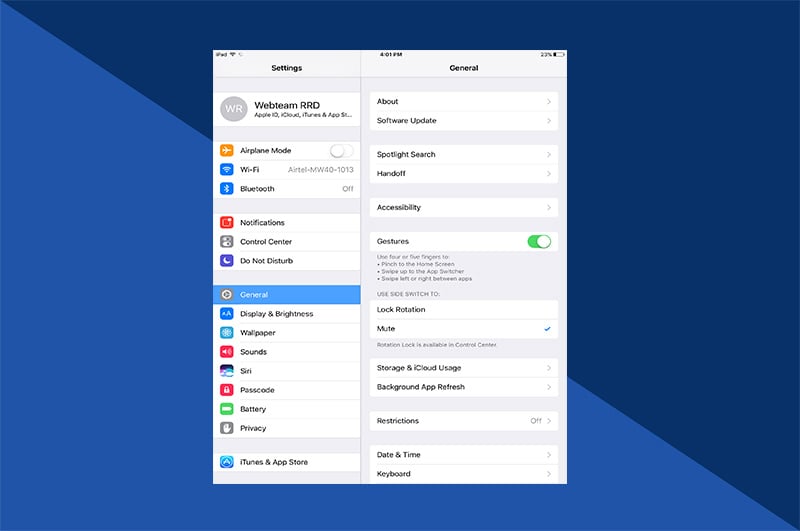Happy National Puppy Day! This celebration of all things big eyed and floppy eared ranks handily in our top five national days because, well, puppies! Sorry, National Weed Your Garden Day (June 13th), but you can’t compete with this level of adorable.
Of course, it’s not just puppies. All our four-legged friends fill us with boundless joy and hold special places in our lives. Yet, as any puppy-preening shutterbug will tell you, capturing all that personality can be tricky. Dogs, especially puppies, can be unpredictable, and you’ll often notice the perfect shot about five seconds after you raise your camera.
But it is possible to capture your dog’s unique personality in a collection of high quality photos. Here are a few tips to help with photographing dogs..
1. Be the dog whisperer
Dogs view themselves as part of your pack, an outlook that makes them highly empathic. If you are calm and serene, they’ll take it easy. If you are bouncy and energetic, they’ll be eager to play. But if you’re stressed and anxious, they’ll worry that something is wrong.
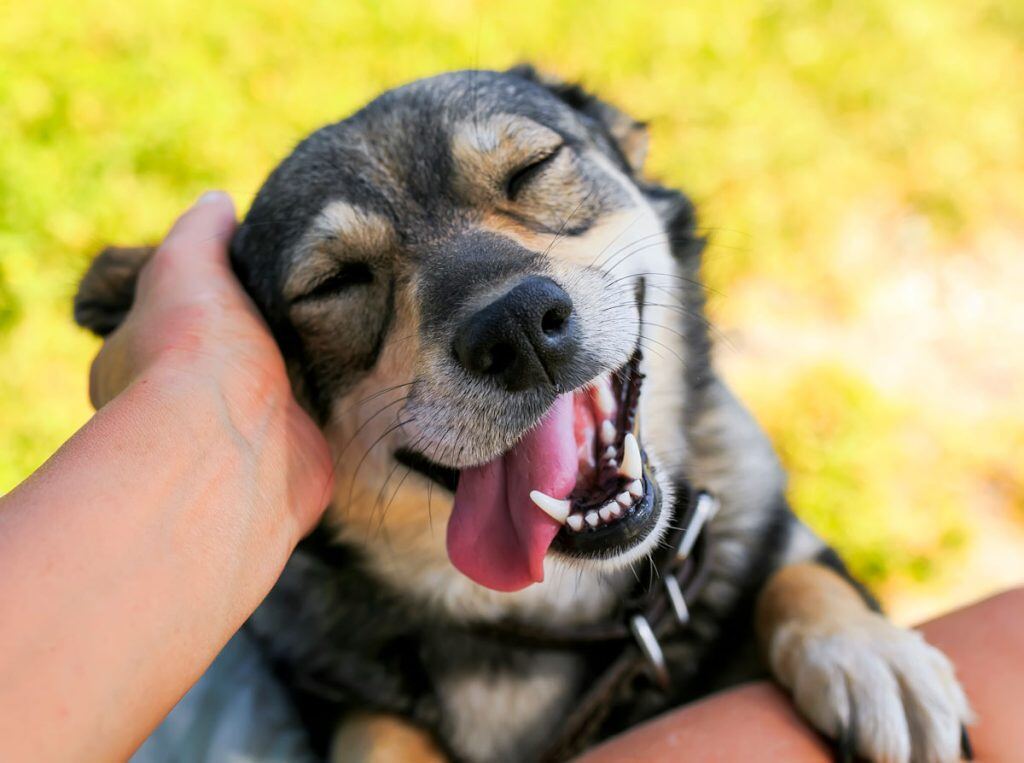
2. Get on your pup's level
Take photos from many different angles. A high angle will show how your dog relates to you, tall human that you are. Meanwhile, a low angle can give him a larger-than-life quality, especially a bigger breed like a Saint Bernard.
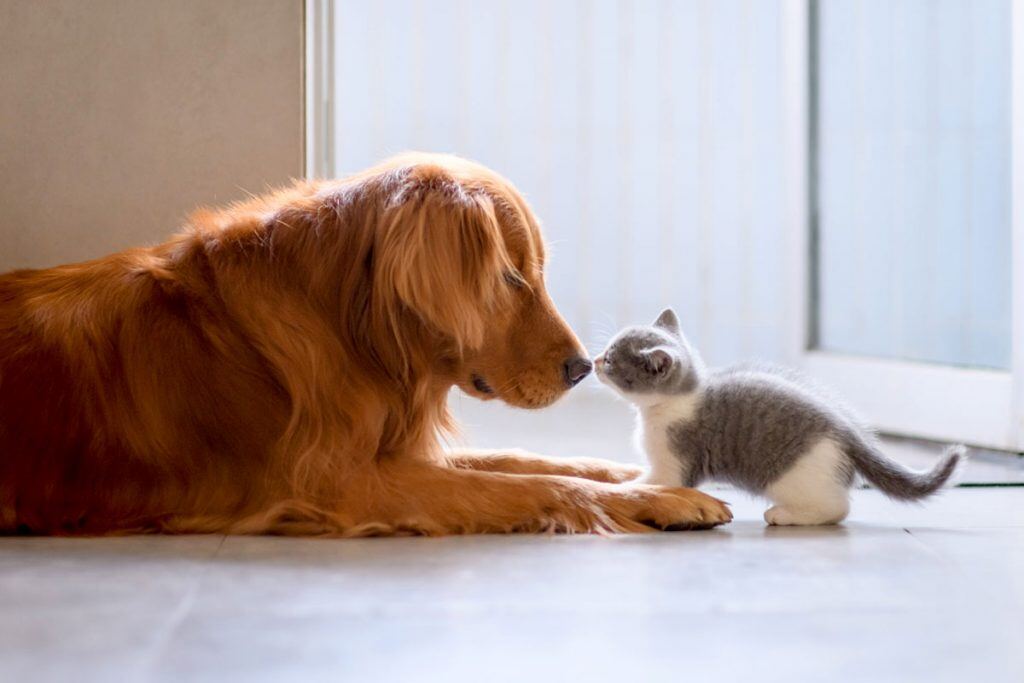
With that said, we’ve found that our most personable photographs come from experiencing a dog’s perspective straight on. Getting on her level fills the frame with your pup’s personality and actions. It offers the composition a unique vantage point, one our vertical-centered minds don’t typically consider.
3. Capture their unique personality
People carry their emotions in their expressions. It’s the same with dogs. The best way to capture those looks is to focus on the eyes and face—especially the eyes. Your dog’s eyes will completely alter the way your composition is appraised, imbuing it with feelings as diverse as joy, disappoint, mischievousness, comfort, curiosity, and sleepiness.
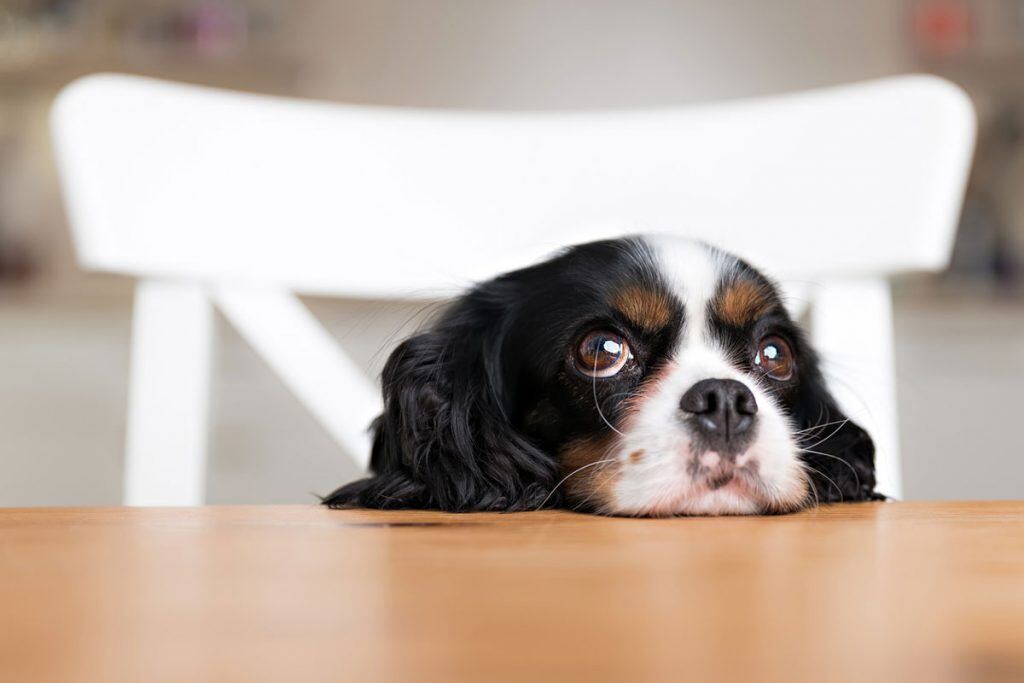
Your pup’s facial expression will then accentuate those emotions. A panting grin with a lolling tongue shows carefree mirth, while a lowered head and averted eyes suggests she may know something about how those slippers got chewed to shreds.
Of course, you can’t force your dog feel a certain way, but as our next tip will show you, you can help them along.
4. Schedule a specific time and place
When photographing dogs, knowing when and where you’ll shoot offers many benefits. Importantly it helps you ensure your dog’s safety, especially if you’re shooting off leash, and it allows you to plan your day around the shoot and create conditions that improve your chances capturing that desired composition.
Like people, dogs are habitual. They’re energetic at certain times. They itch to go outside in the sun and curl up on your bed in the rain. By scheduling a specific time and place—and looking ahead in the forecast—you can use your dog’s habits to your advantage.
For example, a sunny afternoon at the park is great for action shots. Meanwhile, an evening next to a roaring fire makes for wonderful portraits.
5. Prepare the environment
This one’s a photography precept: prepare your environment when possible. Make sure the room is tidy. Drape that throw nicely over the sofa and pick up the books. And gather the garden tools so they aren’t scattered about. You don’t need to micromanage every detail of the environment, but you’ll want to ensure background elements don’t distract the viewer from what’s otherwise a perfect photo. Or you can create opportunities for certain shots, such as racking up conspicuous piles of autumn leaves to tempt your pup with.
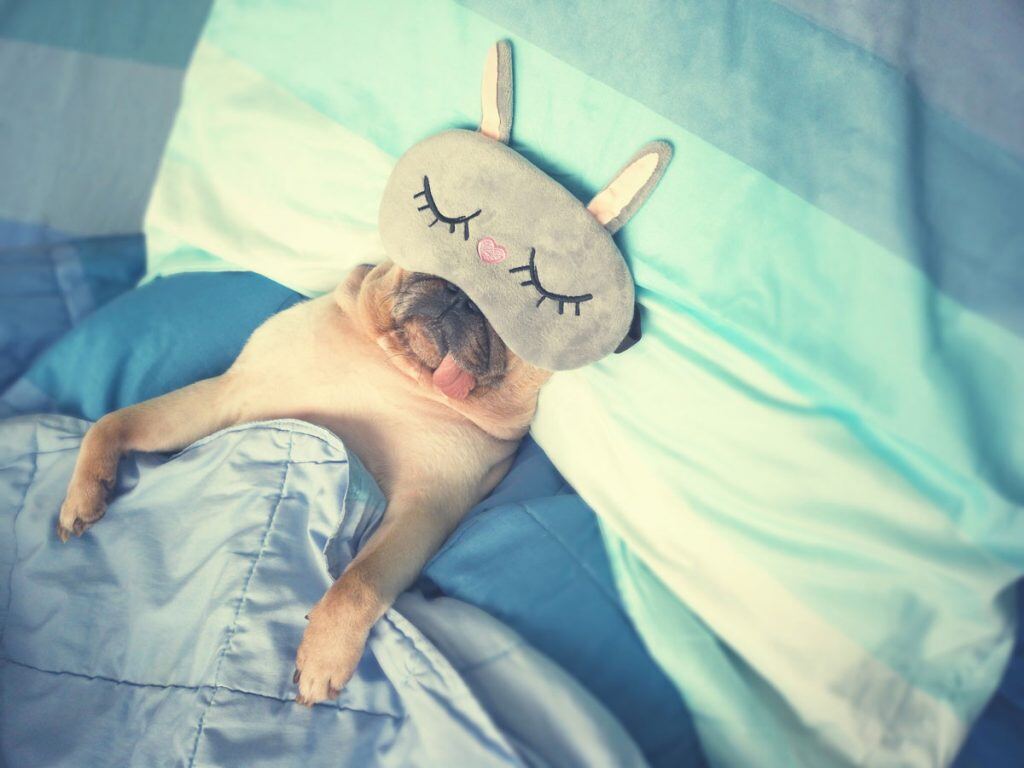
Yes, dogs add an extra layer. Since you’ll be shooting at her level, you’ll need to prepare the environment at her level, too. That means getting down and seeing how the world looks from a quadruped’s perspective. And take heart knowing your photos will be all the better for it.
6. Use natural light
Dogs are a lot like people (they certainly think so). And like people, they tend to look their best in diffused natural light.
It lights them evenly, prevents harsh shadows, and gives their coats a soft quality that just makes you want to snuggle. Your best bet will be to shoot on days where the cloud cover diffuses the sunlight, but isn’t so overcast to drench the image in mucky grey. If your lighting conditions are less than ideal, consider post-processing editing.
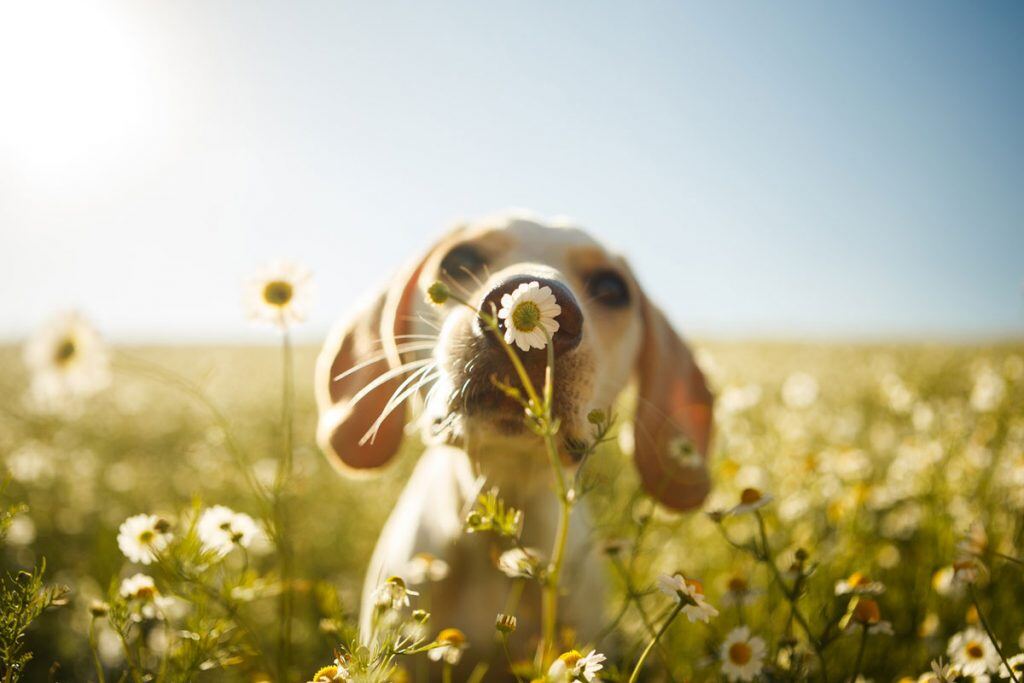
Try not to use flashes either. A flash’s harsh light can make the image grainy and give your pooch a hollow eyeshine. Plus, you run the risk of scaring the poor guy. Probably not what you’re going for.
7. Tips for action shots
There’s only one thing better than a dog playing catch, enjoying a game of tag, or just running for the sheer joy of it—capturing the moment.
A good tip is to up your camera’s shutter speed. A faster shutter speed will freeze the action so the image doesn’t blur horribly. You’ll need to experiment to dial in the shutter appropriately for your puppy’s preferred activity. If your camera has a focus-tracking function, give that a try too.
To direct your dog’s focus where you’re shooting, try using toys, balls, and treats. Having a second person who can throw the ball while you handle the camera can be a big help.
Want more technical tips for photographing active dogs? Then check out this excellent article from Photocrowd.
8. Reward your buddy
During your photo session and when you’ve finished, be sure to reward your subject. You can give her praise, belly rubs, treats, or let her snuggle with you on the couch. All of the above? Why not! Do whatever your photo companion needs to feel special.
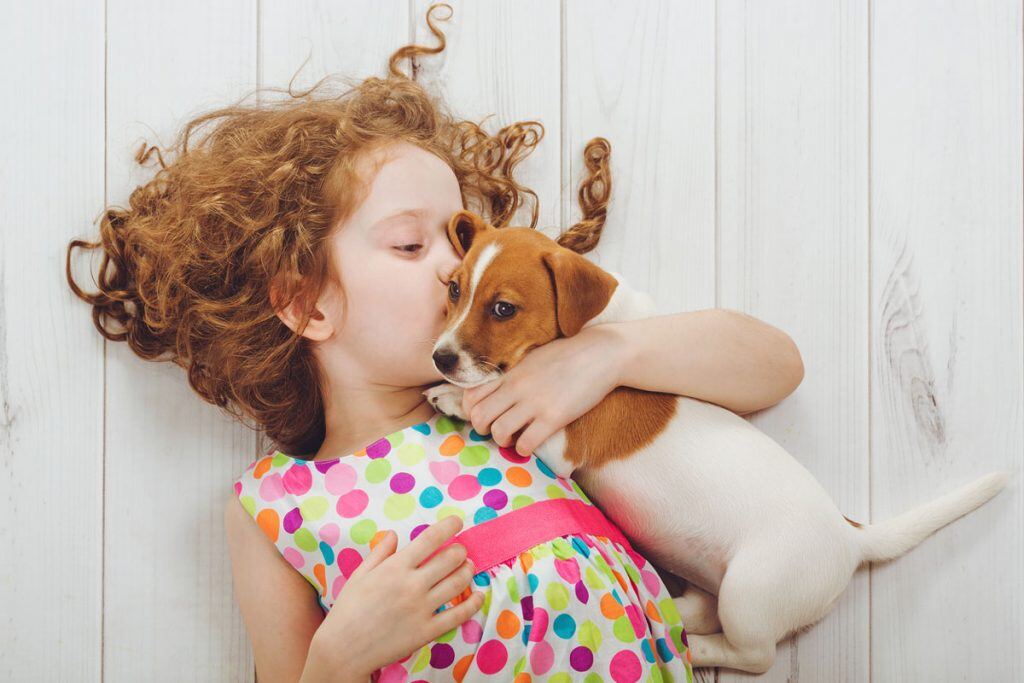
Not only does this strengthen your bond; it also helps your dog associate the camera with love, affection, and positive reinforcement. This will make her more comfortable around the camera in future sessions, which will make your job easier next time.
9. Build a puppy book with Motif
After a few photo sessions, you’ll likely have a collection of photographs. What better way to celebrate your one-of-a-kind relationship with your dog than designing a puppy photo book! Of course, if you’ve followed our advice, you likely have hundreds of photos to sift through to find the best ones. Here’s where Motif comes in.











